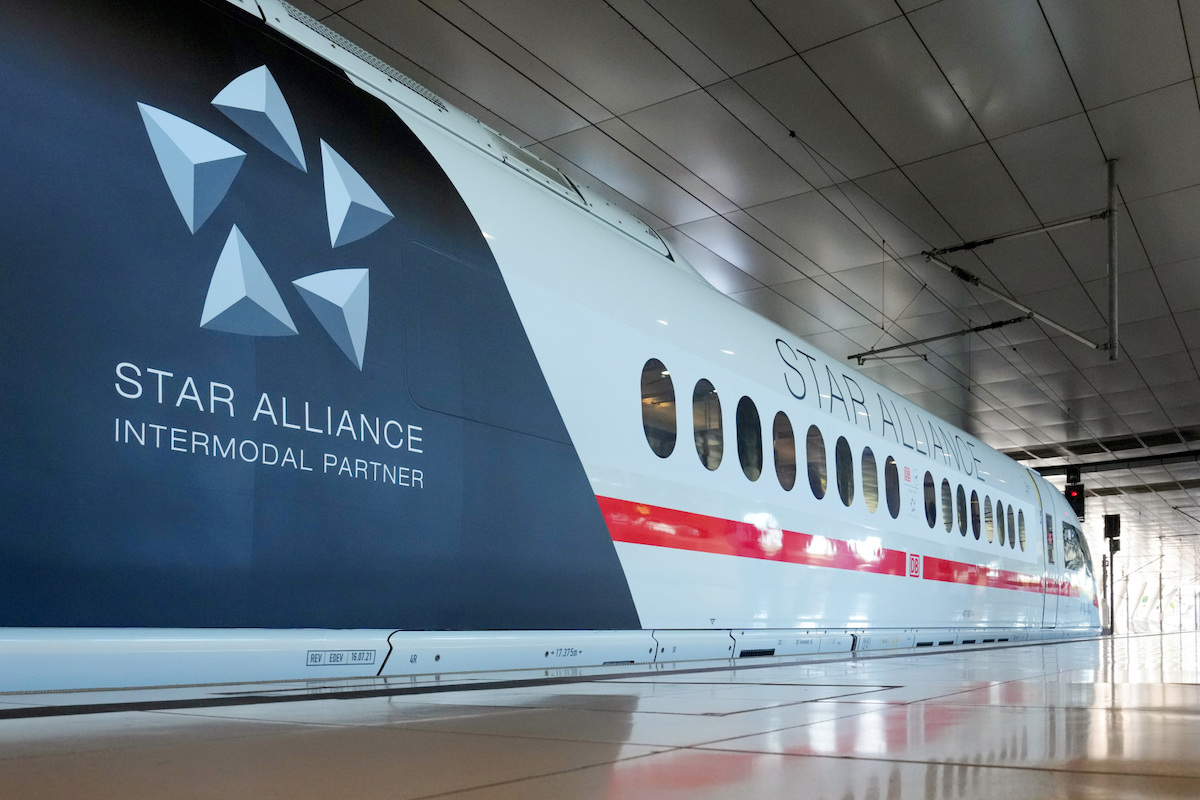New Star Alliance-Deutsche Bahn Partnership May Face Hurdles Shifting Flyers to Trains

Photo Credit: Deutsche Bahn AG / Oliver Lang
Global airline partnership Star Alliance has a new old solution to cutting carbon emissions: the train.
The alliance has signed German railway operator Deutsche Bahn (DB) as its first "intermodal" partner. The pact, which officially launches August 1, will build on Star member Lufthansa's existing partnership with DB and offer travelers joint flight and train bookings across Star's 26 member airlines, as well as loyalty benefits. In a statement, the alliance called the tie up an "environment-friendly evolution of the travel industry."
"With attractive inner-German connections and simultaneous links to international travel chains, Deutsche Bahn and Star Alliance make a significant contribution to reducing [carbon] emissions in the transport sector," the head of DB's long-distance rail division Michael Peterson said in a statement July 4.
And he's not wrong. Numerous studies have proven that carbon emissions drop when a flight is replaced by a train, even the non-high speed kind, at least on routes under roughly 250 miles. This was behind France's ban last year of flights carrying local travelers — in other words, ones not connecting on to other destinations — on routes where trains make the journey in two-and-a-half hours or less.
But without an outright ban on such flights, the question is how to actually shift travelers to trains when flight options still exist. Trains may be available but, in most cases, if reservations systems do not prioritize them above flights travelers are likely to book either the cheapest or most convenient option. For example, for a trip from Washington, D.C., to Dusseldorf in September — more than a month after the Star Alliance-DB partnership begins — searches on both Lufthansa and United Airlines' websites place flight options above DB trains if they show trains at all. For the latter, one must select the Dusseldorf train station as their destination in order to receive rail options.
And after the issue of technology nudges, there is also the question of infrastructure and the actual transfer experience. A recent joint flight-train trip on Air France and French rail operator SNCF with a connection at Paris' Charles de Gaulle airport found the process counterintuitive and lacking in clear signage, especially when compared to making a flight connection.
Asked how DB sees the new Star partnership reducing emissions, a spokesperson said it will help avoid the addition of "more short-haul flights in the future." In addition, the pact sends a "strong signal for the decarbonization of mobility," they added.
Both the DB spokesperson and the rail operators statements say that the number of travelers booking joint air-rail tickets with Lufthansa has doubled since 2010. However, in 2019, Lufthansa has said that 575,000 passengers used its rail partnership with DB — or less than 1 percent of the 71.3 million passengers the airline carried that year.
In addition, it is not clear how many Star members will place their own flight numbers on DB trains, something that typically traveler usage. Spokespeople for All Nippon Airways (ANA) and Singapore Airlines each said that their airlines had not done so yet but were considering it in the future.
But pushing travelers onto trains and off planes may not be Star's goal. "We leave it up to the customer entirely to decide whether they would like to start or end the journey by air or by rail connection," a spokesperson for the alliance said. As for the transfer experience, they said Star will "address many stress points in the journey with technology."
For all of the Star-DB partnership's apparent drawbacks, it does show airlines are getting serious about offering alternatives to flying to, at the very least, expand their networks if not reduce carbon emissions. Air France, Delta Air Lines, Iberia, KLM, Lufthansa, and Swiss International Air Lines have all individually launched new or expanded partnerships with rail operators across Europe in the past year. And American Airlines, Finnair, and United have partnered with bus operators to add new routes or replace flights in both the U.S. and Europe.
"People will only take the train if it’s easy for them," said Kathrin Obst, the deputy head of unit in the European Commission’s Directorate General of Mobility and Transport, at a United Europe event in March. Star and DB's new partnership does at least that: it makes taking the train just a little bit easier for flyers.
Story updated with comments from Star Alliance.
